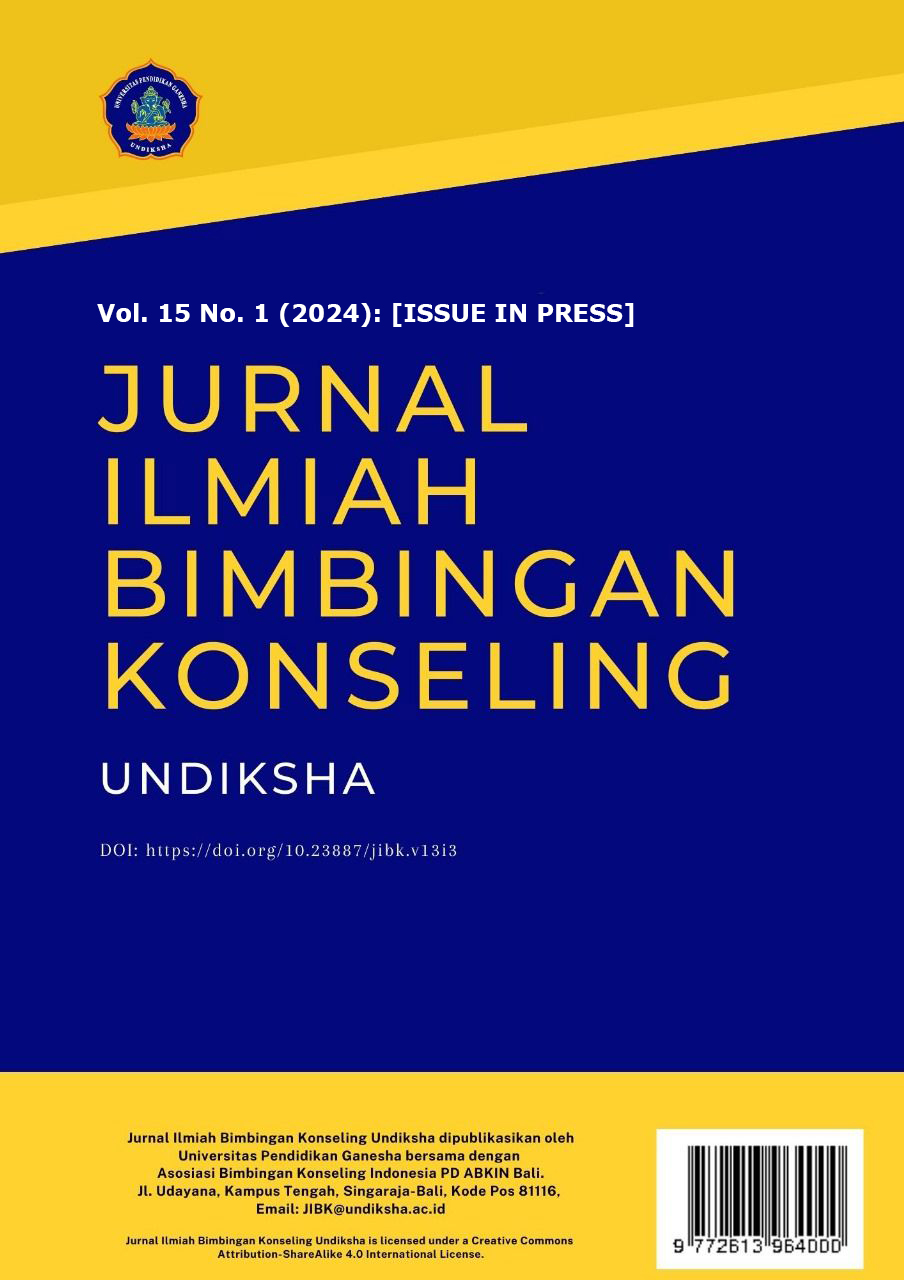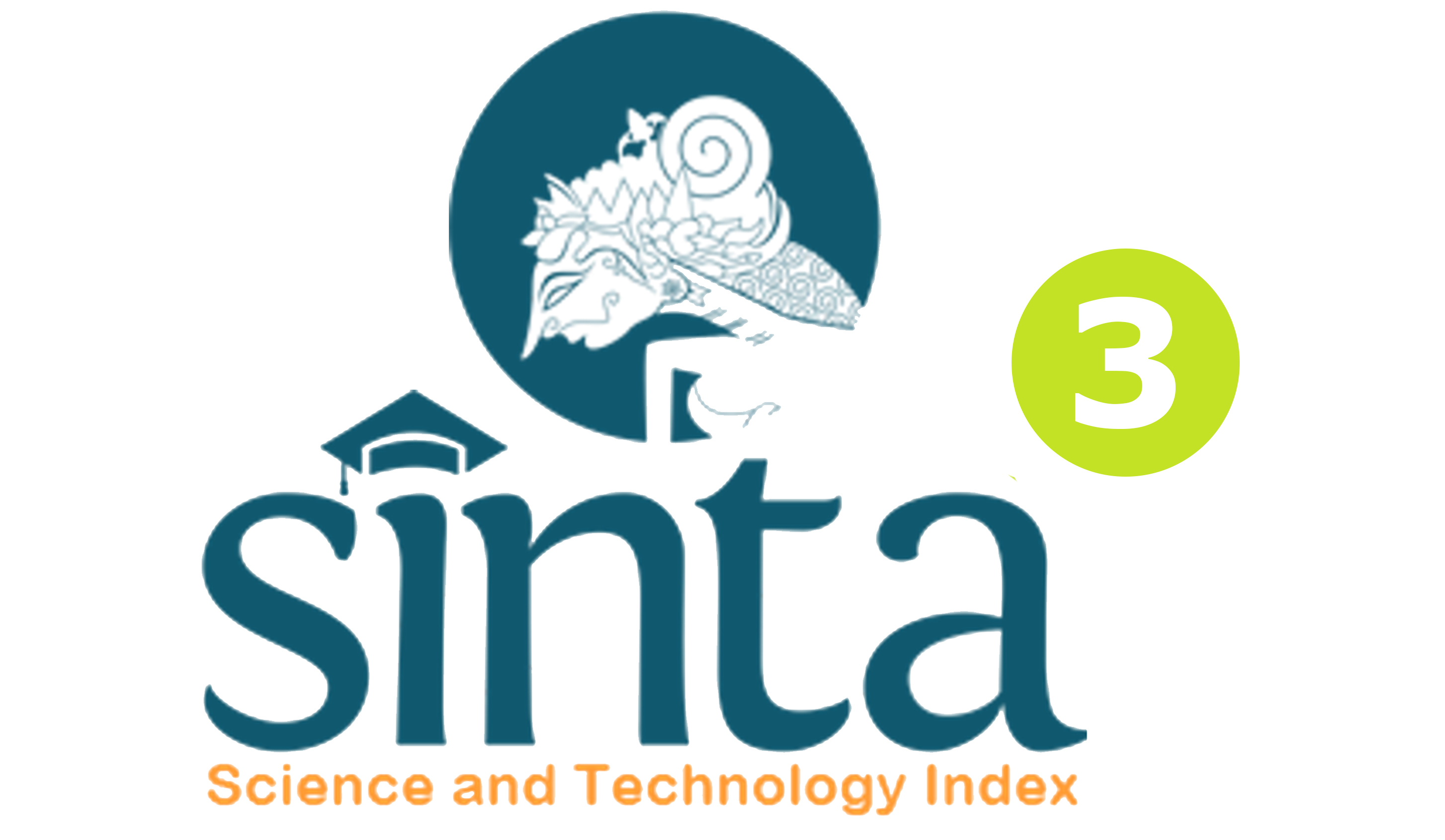Rasch Model Analysis: Validity and Reliability of Body Image Instrumen for Adolescent Prisoners
DOI:
https://doi.org/10.23887/jibk.v15i1.81228Keywords:
Body Image, Validity, Reliability, Rasch Model, InstrumentAbstract
Body image can be seen as a multifaceted concept that includes an individual's conscious understanding of their physical appearance, involving thoughts and emotions that arise from that perception. The distress that arises in adolescents is triggered by physical changes that cause dissatisfaction with themselves. Feelings of dissatisfaction indicate that adolescents reject their bodies. It seems very important to understand adolescents' perceptions and feelings towards their bodies by measuring body image variables. This study aims to analyze the validity and reliability of the body image instrument using the Rasch Model analysis. This study used a survey method with a cross-sectional study design that was analyzed through the Rasch Model using the Winstep Application version 3.73. The participants in this study were 135 juvenile inmates. The result of Pearson Reliability is 0.57 and Item Reliability is 0.84. This shows that the consistency of respondents' answers is still weak, but the quality of the items is included in the excellent category. Based on the criteria for the level of fit of the items, all items on the body image instrument are proven to be fit, because they have met at least one of the three criteria with the Rasch model. This indicates that there are no unfit items on the body image instrument. This shows that the instrument used is included in the excellent category.
References
Agustin, F., & Soetjiningsih, C. H. (2021). The relationship between self-concept and anxiety before being released in Correctional Inmates in Class IIA Ambarawa Correctional. Jurnal Ilmiah Bimbingan Konseling Undiksha, 12(3), 334–340. https://doi.org/10.23887/jibk.v12i3.38560.
Alidia, F. (2018). Body Image Siswa Ditinjau Dari Gender. Tarbawi : Jurnal Ilmu Pendidikan, 14(2), 79. https://doi.org/10.32939/tarbawi.v14i2.291.
Ardiyanti, D. (2017). Aplikasi Model Rasch pada Pengembangan Skala Efikasi. Diri dalam Pengambilan Keputusan Karir Siswa. Jurnal Psikologi, 43(3), 248. https://doi.org/10.22146/jpsi.17801.
Arikunto, S. (2009). Prosedur Penelitian: Suatu Pendekatan Praktik (edisi revisi). Rineka Cipta.
Bucchianeri, M. M., Arikian, A. J., Hannan, P. J., Eisenberg, M. E., & Neumark-sztainer, D. (2013). Body dissatisfaction from adolescence to young adulthood : Findings from a 10-year longitudinal study. Body Image, 10(1), 1–7. https://doi.org/10.1016/j.bodyim.2012.09.001.
Creswell, J. W. (2012). Educational Research Planning, Conducting and Evaluating Quantitative and Qualitative Research (Fourth). Pearson Education, Inc.
Febrina Tarigan, E., Nilmarito, S., Islamiyah, K., Darmana, A., Retno, D., Suyanti, D., & Abstrak, I. A. (2022). Analisis Instrumen Tes Menggunakan Rasch Model dan Software SPSS 22.0. JIPK, 16(2). http://journal.unnes.ac.id/nju/index.php/JIPK.
Gallagher, P., Horgan, O., Franchignoni, F., Giordano, A., & MacLachlan, M. (2007). Body image in people with lower-limb amputation: A Rasch analysis of the amputee body image scale. American Journal of Physical Medicine and Rehabilitation, 86(3), 205–215. https://doi.org/10.1097/PHM.0b013e3180321439.
Gattario, K. H., & Frisén, A. (2019). From negative to positive body image: Men’s and women’s journeys from early adolescence to emerging adulthood. Body Image, 28, 53–65. https://doi.org/10.1016/j.bodyim.2018.12.002.
Hanifah, N. (2014). Perbandingan Tingkat Kesukaran, Daya Pembeda Butir Soal dan Reliabilitas Tes Bentuk Pilihan Ganda Biasa dan Pilihan Ganda Asosiasi Mata Pelajaran Ekonomi. SOSIO E-KONS, 6(1), 41–55. https://core.ac.uk/download/pdf/270252298.pdf.
Ifdil, I., Denich, A. U., & Asmidir, I. (2017). Hubungan Body Image dengan Kepercayaan Diri Remaja Putri. Jurnal Kajian Bimbingan Dan Konseling, 2(3), 107–113. https://citeus.um.ac.id/jkbk/vol2/iss3/11/.
Inderasari, O. P., Juniarsih, N., Solikatun, & Kusuma, N. (2022). Realitas Sosial Anak Berhadapan dengan Hukum (ABH) dalam Institusi Total di Lembaga Pembinaan Khusus Anak (LPKA) Mataram. Resiprokal : Jurnal Riset Sosiologi Progresif Aktual, 4(1), 40–64. https://doi.org/https://doi.org/10.29303/resiprokal.v4i1.120.
Iskandar, A., & Rizal, M. (2018). Analisis kualitas soal di perguruan tinggi berbasis aplikasi TAP. Jurnal Penelitian Dan Evaluasi Pendidikan, 22(1), 12–23. https://doi.org/10.21831/pep.v22i1.15609.
Jiotsa, B., Naccache, B., Duval, M., Rocher, B., & Grall-Bronnec, M. (2021). Social media use and body image disorders: Association between frequency of comparing one’s own physical appearance to that of people being followed on social media and body dissatisfaction and drive for thinness. International Journal of Environmental Research and Public Health, 18(6), 1–14. https://doi.org/10.3390/ijerph18062880.
Mills, J. S., Musto, S., Williams, L., & Tiggemann, M. (2018). “Selfie” harm: Effects on mood and body image in young women. Body Image, 27, 86–92. https://doi.org/10.1016/j.bodyim.2018.08.007.
Nguyen, S. Van, & Habók, A. (2021). Designing and validating the learner autonomy perception questionnaire. Heliyon, 7(4). https://doi.org/10.1016/j.heliyon.2021.e06831.
Noviyanto, T. S. H., Juanengsih, N., & Rosyidatun, E. S. (2015). Penggunaan Media Video Animasi Sistem Pernapasan Manusia Untuk Meningkatkan Hasil Belajar Biologi. Edusains, 7(1), 57–63. https://doi.org/10.15408/es.v7i1.1215.
Nur, L., Yulianto, A., Suryana, D., Malik, A. A., Al Ardha, M. A., & Hong, F. (2022). An Analysis of the Distribution Map of Physical Education Learning Motivation through Rasch Modeling in Elementary School. International Journal of Instruction, 15(2), 815–830. https://doi.org/10.29333/iji.2022.15244a.
Ramanda, R., Akbar, Z., & Wirasti, R. A. M. K. (2019). Studi Kepustakaan Mengenai Landasan Teori Body Image Bagi Perkembangan Remaja. JURNAL EDUKASI: Jurnal Bimbingan Konseling, 5(2), 121. https://doi.org/10.22373/je.v5i2.5019.
Ramdan, I. M., Duma, K., & Setyowati, D. L. (2019). Reliability and Validity Test of the Indonesian Version of the Nordic Musculoskeletal Questionnaire (NMQ) to Measure Musculoskeletal Disorders (MSD) in Traditional Women Weavers. Global Medical & Health Communication (GMHC), 7(2). https://doi.org/10.29313/gmhc.v7i2.4132.
Rohmah, F. N., Susilaningsih, E., Haryani, S., Kasmui, D., Kimia, J., Matematika, F., Ilmu, D., Alam, P., Kompetensi, A., & Asam-Basa, L. (2022). Desain Asesmen Kompetensi Minimum Literasi Membaca Bermuatan High Order Thinking Skills untuk Menganalisis Kompetensi Minimum Siswa Materi Asam-Basa. Chemined, 11(2), 117–125. https://doi.org/10.15294/chemined.v11i2.58847.
Rubio, V. J., Aguado, D., Hontangas, P. M., & Hernández, J. M. (2007). Psychometric properties of an emotional adjustment measure: An application of the graded response model. European Journal of Psychological Assessment, 23(1), 39–46. https://doi.org/10.1027/1015-5759.23.1.39.
Rudiger, J. A., Cash, T. F., Roehrig, M., & Thompson, J. K. (2007). Day-to-day body-image states: Prospective predictors of intra-individual level and variability. Body Image, 4(1), 1–9. https://doi.org/10.1016/j.bodyim.2006.11.004.
Rustam, Z., Yuda, R. P., Alatas, H., & Aroef, C. (2020). Pulmonary rontgen classification to detect pneumonia disease using convolutional neural networks. Telkomnika (Telecommunication Computing Electronics and Control), 18(3), 1522–1528. https://doi.org/10.12928/TELKOMNIKA.v18i3.14839.
Sari, C., & Soejiningsih, C. H. (2021). Hubungan Antara Body Image Dengan Perilaku Diet Pada Siswi Di SMA Kristen 1 Salatiga. Jurnal Psikologi Konseling, 18(1), 910–925. https://www.academia.edu/download/105541973/16622.pdf.
Seekis, V., Bradley, G. L., & Duffy, A. L. (2021). How is Trait Self-Compassion Used During Appearance-Related Distress by Late Adolescents and Emerging Adults With Positive or Negative Body Image? A Qualitative Study. Journal of Adolescent Research. https://doi.org/10.1177/07435584211011471.
Stice, E., & Shaw, H. E. (2002). Role of body dissatisfaction in the onset and maintenance of eating pathology A synthesis of research findings. Journal of Psychosomatic Research, 53, 985–993. https://doi.org/doi:10.1016/s0022-3999(02)00488-9.
Sugiyono, D. (2015). Metode Penelitian Kuantitatif, Kulaitatif, dan R&D (Cetakan Ke). Alfabeta CV.
Sung, N. J., Ma, J., Choi, Y. J., & Hong, M. (2019). Real-time augmented reality physics simulator for education. Applied Sciences (Switzerland), 9(19). https://doi.org/10.3390/app9194019.
Verplanken, B., & Velsvik, R. (2008). Habitual negative body image thinking as psychological risk factor in adolescents. Body Image, 5(2), 133–140. https://doi.org/10.1016/j.bodyim.2007.11.001.
Wang, X., & Cheng, Z. (2020). Cross-Sectional Studies: Strengths, Weaknesses, and Recommendations. Chest, 158(1), 65–71. https://doi.org/10.1016/j.chest.2020.03.012.
Yusuf, S., Budiman, N., Yudha, E. S., Suryana, D., & Yusof, S. M. J. B. (2021). Rasch Analysis of the Indonesian Mental Health Screening Tools. The Open Psychology Journal, 14(1), 198–203. https://doi.org/10.2174/1874350102114010198.
Downloads
Published
Issue
Section
License
Copyright (c) 2024 Ghaida Az zahra Kusnadi, Mamat Supriatna, Eka Sakti Yudha

This work is licensed under a Creative Commons Attribution 4.0 International License.
Jurnal Ilmiah Bimbingan Konseling Undiksha is an Open Access Journal. The authors who publish the manuscript in this journal agree to the following terms:
JIBK is licensed under a Creative Commons Attribution 4.0 International License. This permits anyone to copy, redistribute, remix, transmit and adapt the work provided the original work and source is appropriately cited.
This means:
Jurnal Ilmiah Bimbingan Konseling is licensed under a Creative Commons Attribution 4.0 International License.
(1) Under the CC-BY license, authors retain ownership of the copyright for their article, but authors grant others permission to use the content of publications in JIBK in whole or in part provided that the original work is properly cited. Users (redistributors) of JIBK are required to cite the original source, including the author's names, JIBK as the initial source of publication, year of publication, volume number, issue, and Digital Object Identifier (DOI); (2) The authors are the copyright owner of the article, and the author grants the JIBK held the first publication right.









.png)

.jpg)
